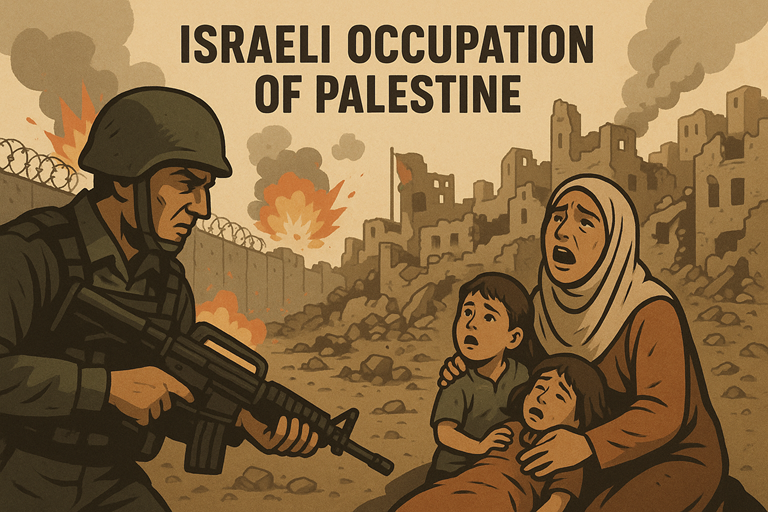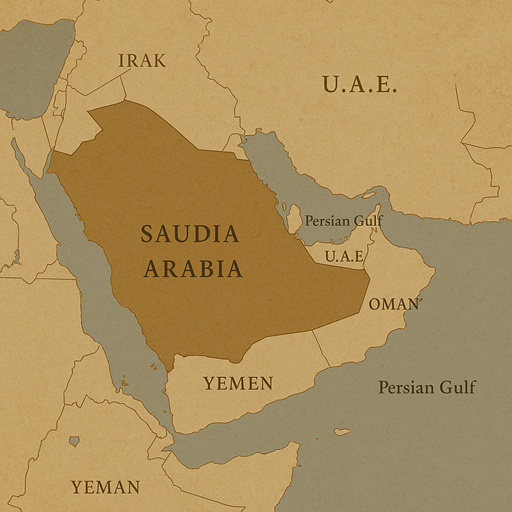
The Roots of the Israeli Occupation of Palestine
Published on: June 26, 2025
Introduction: Behind the Headlines
The Israeli-Palestinian conflict is not a conflict that began yesterday. It is the culmination of centuries of history, of promises made and broken, of global powers meddling in a land they did not understand, and of a deep and ongoing human tragedy. To grasp the reality of the Israeli occupation of Palestine, we must peel back the layers of propaganda and headlines to the deep, often painful, historical roots of how we got here.
It is the story of a people, the Children of Israel, whose history with the land is described in the Quran as one of divine blessing and repeated transgression. It is the story of European antisemitism, which reached its horrific peak in the Holocaust, creating an undeniable moral imperative for the safety of the Jewish people. And it is the story of how that quest for safety was cynically used by colonial powers, and later a superpower, to lead to the systematic displacement of another people, the Palestinians, in their own homeland.
This is not a simple story of right versus wrong. It is a story where one people's refuge became another people's catastrophe, known as the Nakba.
Part 1: The Quranic Narrative – The Children of Israel and the Holy Land
To understand the deep religious underpinnings of this land, we must turn to the Islamic narrative of the Bani Isra'il (the Children of Israel). According to the Quran, their connection to the land is not one of simple ownership, but of a sacred covenant that was repeatedly broken.
"O Moses, indeed we will not enter it, ever, as long as they are within it. So go, you and your Lord, and fight. Indeed, we are sitting right here."
- Quran 5:24
For this profound act of disobedience, Allah decreed that they would wander aimlessly in the Sinai desert for forty years. Their history is a cycle of miracles met with defiance. The Quran states that the religious leadership of the Bani Isra'il became deeply corrupt, rejecting and conspiring against the Prophet Isa (Jesus). This narrative establishes the Children of Israel not as owners of the land, but as stewards who were given a divine trust—a trust they repeatedly betrayed.
Part 2: The European Sickness – How Antisemitism and the Holocaust Forged a State
The modern conflict in Palestine was not born in the Middle East. It was born in the capitals of Europe, from a lethal combination of modern nationalism and an ancient hatred: antisemitism. In the 19th century, this mutated into a new racial ideology of antisemitism, reaching its horrific conclusion with Adolf Hitler and the Holocaust, in which six million Jews were systematically murdered.
As Jews tried to flee, the world shut its doors. This catastrophic indifference provided the ultimate justification for the Zionist movement: the Jewish people needed their own sovereign state to be safe.
Part 3: The British Betrayal and the Nakba
The dream of a Jewish state was realized on the back of British imperial ambition. The Balfour Declaration of 1917 promised support for "a national home for the Jewish people" in Palestine, a land where Jews made up less than 8% of the population. It was a promise of the same land to two peoples, guaranteeing future conflict.
When Britain abandoned its mandate in 1948, the United Nations proposed a partition plan that was inherently unequal. The ensuing 1948 war gave birth to the Nakba, or "The Catastrophe."
750,000+
Palestinians ethnically cleansed from their homes
500+
Palestinian towns and villages depopulated and destroyed
78%
of historic Palestinian land seized by the new state of Israel
Part 4: The Human Cost – A Timeline of Asymmetric Violence
The result of this history is over half a century of brutal military occupation and a cycle of violence where the human cost is borne overwhelmingly by one side. The data from the United Nations and human rights organizations is not an opinion; it is the grim, factual record of an asymmetric reality.
Fatalities in Major Conflicts (2000-Present)
Note: A logarithmic scale is used on the vertical axis to visualize the vast disparity in casualty numbers.
Casualty Breakdown in Key Conflicts
| Conflict / Period | Palestinians Killed | Israelis Killed |
|---|---|---|
| Second Intifada (2000-2005) | ~3,354 | 1,010 |
| Operation Cast Lead (2008-09) | ~1,409 | 13 |
| Operation Protective Edge (2014) | ~2,310 | 72 |
| Great March of Return (2018-19) | 223 | 1 |
| Gaza War (Oct 2023 - Present) | 56,950+ | ~1,706 |
Conclusion: An Inescapable Truth
The story of the Israeli occupation of Palestine is one of historical injustice compounded by modern geopolitical cruelty. It is the story of a people who, fleeing persecution, were used as a colonial tool to displace the indigenous people of a land. And it is a story that is enabled, funded, and armed by the United States.
To speak of peace without addressing these core truths—the history of the Nakba, the illegality of the occupation and settlements, and the role of the United States in sustaining it—is a meaningless exercise. A just future can only be built on a foundation of truth, accountability, and an end to the occupation that has defined this conflict for so long.
References and Further Reading
- Al-Haq. (2009). 'Operation Cast Lead': A Statistical Analysis.
- Al Jazeera. (2018). More than a century on: The Balfour Declaration explained.
- B'Tselem - The Israeli Information Center for Human Rights in the Occupied Territories.
- United Nations Office for the Coordination of Humanitarian Affairs (OCHA).
- Wikipedia entries on: Nakba, Second Intifada, 2014 Gaza War, Great March of Return, and casualties of the Israel–Hamas war.

Written by
Sajid Hasan
Sajid is a writer and analyst focusing on market dynamics and strategic business movements in South Asia.

